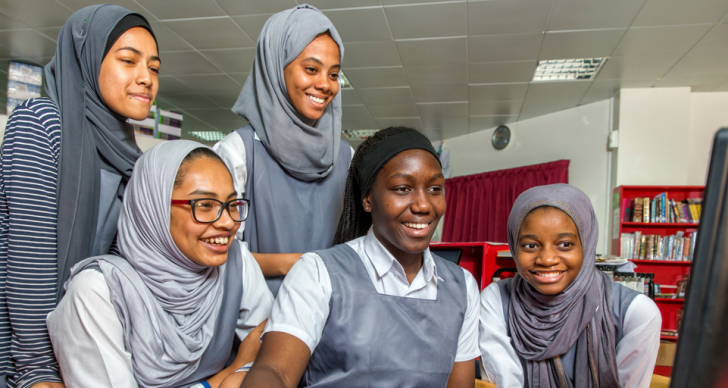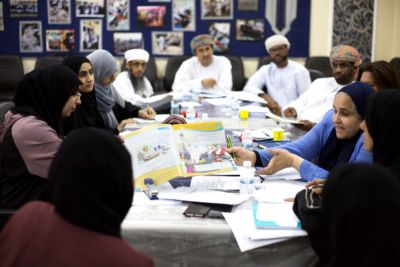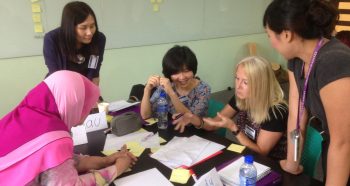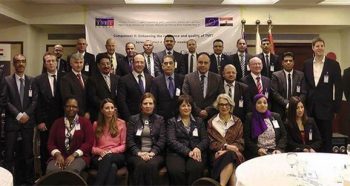Blended learning is one of those buzzwords you hear a lot in the world of education. While the term may have different meanings for different people, there is an overall shared understanding that ‘blended learning’ means incorporating technology into traditional classroom methods.
Like other buzzwords in education, such as ‘twenty-first century skills’ and ‘project-based learning’, there is nothing particularly new about blending technology with tradition. In fact, almost 50 years ago it was an essential ingredient in the creation of the Open University (OU) in the United Kingdom. The OU was visionary – not only because it embraced new technologies to bring learning into homes and increase widespread access to higher education – but also because it recognised the potential of technology to make teaching and learning more effective.
In other words, it is not about using technology in the classroom for technology’s sake. Rather, combining the power of digital and in-class teaching can help fully realise a more personalised experience for the student. The challenge is implementing digital tools alongside teacher expertise.
So why is ‘blended learning’ a current buzzword?
Today technology is ‘blended’ into every aspect of our daily lives. According to a 2017 report by the GSM Association, the organisation that represents the mobile communications industry, there were 365 million unique mobile subscribers across the Middle East and North Africa (MENA) region in mid-2017, accounting for 63 percent of the population. This figure will grow as connectivity improves, with 5G networks coming to parts of the region soon.
In light of the widespread growth in technology, educators are both exhilarated and intimidated by the need to keep up with and harness digital’s potential in the classroom. New tools seem constantly around the corner and their value is provoking polarised reactions – from enthusiastic supporters who believe in embracing technological progress to vociferous opponents who fear technology in the classroom will distract children from learning.
Illustrative of this attitude is the recent vote by French lawmakers to ban mobile phones in primary and lower secondary schools. Disruptive technology in the context of education can be unsettling for educators who are unsure how to fully realise its power in a classroom setting.
What can technology add to traditional classroom methods?
Implemented alongside the expertise of teachers, the potential of more access to information, connectivity, storage capacity, multimedia capabilities and the promise of voice recognition, virtual reality and artificial intelligence offers exciting possibilities to learners, teachers and institutions.
One of the ‘primary goals’ of blended learning is to help create a more personalised learning experience for the student. This means providing access to education for learners who might otherwise be excluded. Using short videos to introduce new skills at a pace suited to each learner could also help free a teacher’s time to support struggling learners or challenge high achievers.
Gaming is also a popular method to support the introduction of complex concepts, critical thinking and deep learning as it allows students to problem solve in different environments, build relationships and make connections within and across subjects.
Ensuring digital enhances learning
With millions of educational apps, lesson plans, laptops and mobile phones, the seemingly limitless options to harness blended learning can be overwhelming for educators. How do teachers identify the best resources available?
How can digital enhance the quality of learning instead of distract from it?
How do we reassure teachers that new technologies are not there to replace them but to increase their effectiveness in supporting learners to learn?
How do we make teachers feel empowered rather than threatened?
One solution is to equip teachers with continuous professional development in new technologies: providing hands-on practice with technology as an essential component to teacher training could pave the way for a new relationship with enhanced learning outcomes for both the student and the teacher.
One example of this is called ‘flipped learning’ where students are introduced to the learning material before class, with classroom time being used to deepen understanding and to explore what tools and methods are best suited to the individual child’s development stages.
A lot of progress has been made in the world of blended learning and there is a desire and interest to explore its benefits.
At Cambridge, we believe that education can benefit from new technologies and that the value of digital in the classroom really begins with empowering the teachers.






